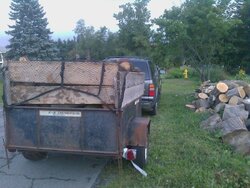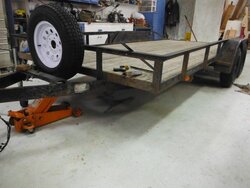I have a 98 Ford Explorer 4WD manual and was thinking about using it to scrounge. After reading a bit on the board it seems like it might be a good idea to buy a trailer . I don't know how much wood I could haul in the back, but I could probably break windows or have wood fly into the front in the event of a collision.
My house is on a hill... it's pretty steep. I don't think there's a way up that's less than a 7% grade, but it looks steeper than that to me just eyeballing it. Going the back way I usually keep it in 2nd gear to make sure I don't lug the engine, or I could go through downtown for a slightly less steep climb.
With a trailer I would have to keep that in mind on my way up. I bet wood could roll off the back unless I stack it with the wood oriented front to back.
I don't know which way would be safer. My primary concern is to make sure I don't bounce a log out of the trailer into trailing traffic, somebody could get hurt. Would roping it down help, or is that not realistic with a trailer full of wood?
What would you recommend to use for hauling wood? There have been a couple of craigslist ads for free wood lately, it seems like it comes available around here fairly regularly.
Thanks for any ideas!
My house is on a hill... it's pretty steep. I don't think there's a way up that's less than a 7% grade, but it looks steeper than that to me just eyeballing it. Going the back way I usually keep it in 2nd gear to make sure I don't lug the engine, or I could go through downtown for a slightly less steep climb.
With a trailer I would have to keep that in mind on my way up. I bet wood could roll off the back unless I stack it with the wood oriented front to back.
I don't know which way would be safer. My primary concern is to make sure I don't bounce a log out of the trailer into trailing traffic, somebody could get hurt. Would roping it down help, or is that not realistic with a trailer full of wood?
What would you recommend to use for hauling wood? There have been a couple of craigslist ads for free wood lately, it seems like it comes available around here fairly regularly.
Thanks for any ideas!



